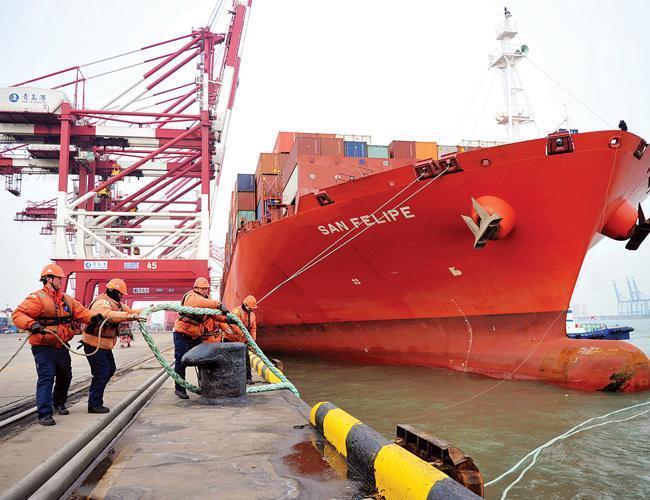
The Trump administration is pressing China to cut its trade surplus with the United States by $100 billion, a White House spokeswoman said on March 14, clarifying a tweet last week from President Donald Trump.
Last week, Trump tweeted that China had been asked to develop a plan to reduce its trade imbalance with the United States by $1 billion, but the spokeswoman said Trump had meant to say $100 billion.
The United States had a record $375 billion trade deficit with China in 2017, which made up two thirds of a global $566 billion U.S. trade gap last year, according to U.S. Census Bureau data.
China reported its 2017 U.S. trade surplus as $276 billion, also about two thirds of its reported global surplus of $422.5 billion.
The White House spokeswoman declined to provide details about how the administration would like China to accomplish the surplus-cutting goal - whether increased purchases of U.S. products such as soybeans or aircraft would suffice, or whether it wants China to make major changes to its industrial policies, cut subsidies to state-owned enterprises or further reduce steel and aluminum capacity.
In a March 15 editorial, widely-read Chinese state-run tabloid the Global Times said the United States was trying to play the victim.
“If the U.S. wants to reduce its trade deficit, it has to make Americans more hard-working and conduct reforms in accordance with international market demand, instead of asking the rest of the world to change,” it wrote.
“Once a trade war starts, capable countries won’t bow to the U.S. China has tried hard to avoid a trade war, but if one breaks out, appeasement is not an option.”
Speaking to reporters in Beijing, Chinese Foreign Ministry spokesman Lu Kang said history showed that trade wars are in nobody’s interests, but that China would protect its legitimate rights if “something happens we don’t want to see”.
“We believe that China and the United States can use friendly consultations to resolve our disputes. We have the good faith to do it this way,” Lu said.
The U.S. request comes as the Trump administration is said to be preparing tariffs on imports of up to $60 billion worth of Chinese information technology, telecoms and consumer products as part of a U.S. investigation into China’s intellectual property practices.
It is also unclear if the requested $100 billion reduction would address U.S. complaints about China’s investment policies that effectively require U.S. firms to transfer technology to Chinese joint venture partners in order to gain market access.
This move has triggered further fears about the joutbreak of a trade war in the global economy and sent stock markets around the world tumbling.
Singapore’s Central Bank chief said on March 15 that there is now a real risk of a trade war that could deal a devastating blow to the global economy.
“There is a real risk now that that (trade war) would happen because these things are not easy to control. And while everyone agrees that a trade war is bad, sometimes you can’t help but retaliate when you are hit with tariffs,” Ravi Menon, the managing director of the Monetary Authority of Singapore (MAS), said at the Asia Money2020 conference in Singapore.
Asked what impact such a trade war would have on the global economy, Menon said it would be “devastating.”
US targets India’s subsidies
Washington also showed on March 14 that it has not abandoned the global trade body, launching a WTO legal challenge to India’s export subsidies for domestic companies, including producers of steel, chemicals, pharmaceuticals, textiles and IT products.
U.S. Trade Representative Robert Lighthizer said India had failed to remove the subsidies as required by WTO rules after the country reached certain economic benchmarks.
The United States is expected to invoke a national security exception to WTO rules in imposing import tariffs of 25 percent on steel and 10 percent on aluminum announced by Trump last week.
U.S. Commerce Secretary Wilbur Ross told lawmakers on March 14 his department would soon publish procedures for product-specific exemptions from the steel tariffs for items that are not available from domestic producers or in short supply. The procedures are due by March 18.